
Vagus Nerve Stimulation May Treat Rheumatoid Arthritis
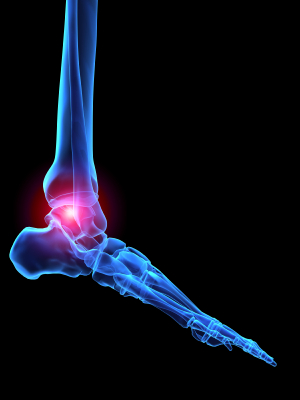 Vagus nerve stimulation is a treatment that has been used to control seizures for people with epilepsy. However, the treatment has recently been used to help people who have rheumatoid arthritis. VNS works by electronically stimulating the nerve that runs from the brain to the gut, in order to get rid of rheumatoid arthritis symptoms. Patients that have used the treatment have experienced improvements in joint swelling as well as other symptoms.
Vagus nerve stimulation is a treatment that has been used to control seizures for people with epilepsy. However, the treatment has recently been used to help people who have rheumatoid arthritis. VNS works by electronically stimulating the nerve that runs from the brain to the gut, in order to get rid of rheumatoid arthritis symptoms. Patients that have used the treatment have experienced improvements in joint swelling as well as other symptoms.Because RA affects more than just your joints, including the joints in your feet and ankles, it is important to seek early diagnosis from your podiatrist if you feel like the pain in your feet might be caused by RA. For more information, contact Dr. Jordan Rachlin of New York. Our doctor can provide the care you need to keep your pain free and on your feet.
What Is Rheumatoid Arthritis?
Rheumatoid Arthritis (RA) is an autoimmune disorder in which the body’s own immune system attacks the membranes surrounding the joints. Inflammation of the lining and eventually the destruction of the joint’s cartilage and bone occur, causing severe pain and immobility.
Rheumatoid Arthritis of the Feet
Although RA usually attacks multiple bones and joints throughout the entire body, almost 90 percent of cases result in pain in the foot or ankle area.
Symptoms
- Swelling & pain in the feet
- Stiffness in the feet
- Pain on the ball or sole of feet
- Joint shift and deformation
Diagnosis
Quick diagnosis of RA in the feet is important so that the podiatrist can treat the area effectively. Your doctor will ask you about your medical history, occupation, and lifestyle to determine the origin of the condition. Rheumatoid Factor tests help to determine if someone is affected by the disease.
If you have any questions, please feel free to contact our offices located in Monroe, NY. We offer the newest diagnostic and treatment technologies for all your foot care needs.
Read more on Rheumatoid Arthritis
Jared Cook Undergoes Foot Surgery
 Jared Cook of the Green Bay Packers recently underwent foot surgery. He claims that he is fully healthy, but he may be overly optimistic. Green Bay’s medical staff has yet to check the status of his foot, but they are expected to do so, soon. The Packers training camp began in late July.
Jared Cook of the Green Bay Packers recently underwent foot surgery. He claims that he is fully healthy, but he may be overly optimistic. Green Bay’s medical staff has yet to check the status of his foot, but they are expected to do so, soon. The Packers training camp began in late July.
Foot surgery is sometimes necessary to fix a foot ailment. To learn more, contact Dr. Jordan Rachlin of New York. Our doctor can provide the care you need to keep you pain-free and on your feet.
When Is Surgery Necessary?
Foot and ankle surgery is generally reserved for cases in which less invasive, conservative procedures have failed to help with the problem. Some of the cases in which surgery may be necessary are:
● Removing foot deformities like bone spurs and bunions
● Severe arthritis that has caused bone issues
● Cosmetic reconstruction
What Types of Surgery Are There?
The type of surgery you receive will depend on the nature of the problem you have. Some of the possible surgeries include:
● Bunionectomy for painful bunions
● Surgical fusion for realignment of bones
● Neuropathy decompression surgery to treat nerve damage
Benefits of Surgery
Although surgery is usually a last resort, it can provide more complete pain relief compared to non-surgical methods and may allow you to finally resume full activity.
Surgical techniques have also become increasingly sophisticated. Techniques like endoscopic surgery allow for smaller incisions and faster recovery times.
If you have any questions please feel free to contact one of our offices in Monroe, NY. We offer the newest diagnostic and treatment technologies for all your foot and ankle needs.
Struggling With Cracked Heels
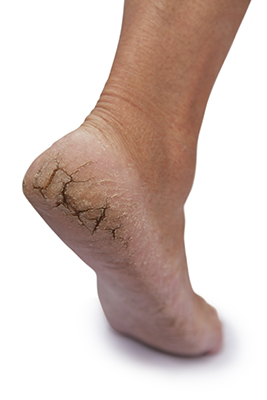 Cracked heels are an issue that many people tend to struggle with, especially during the summer months. A lot of things can cause them, including not wearing socks. Common household items can be used to treat cracked heels. Aspirin, cotton wool, and lemon can all be used to make your heels softer.
Cracked heels are an issue that many people tend to struggle with, especially during the summer months. A lot of things can cause them, including not wearing socks. Common household items can be used to treat cracked heels. Aspirin, cotton wool, and lemon can all be used to make your heels softer.Cracked heels are unsightly and can cause further damage to your shoes and feet. If you have any concerns, contact Dr. Jordan Rachlin of New York. Our doctor will assess your injury and provide you with quality treatment.
Cracked Heels
Cracked heels are unappealing, and make it harder for you walk around in sandals. Not only may they look bad, but they can also tear stockings, socks, and wear out your shoes. There are several methods to help restore a cracked heel and prevent further damage.
How do you get them?
Dry skin is the number one culprit in creating cracked heels. Many athletes, walkers, joggers, and even swimmers suffer from cracked heels. Age and skin oil production play a role to getting cracked heels as well.
Promote Healing
Over the counter medicines can help, especially for those that need instant relief, or who suffer from chronic dry feet.
Wear Socks – wearing socks with medicated creams, helps lock in moisture so it can stay on longer.
Moisturizers – applying it both day and night will help alleviate dryness which causes cracking.
Pumice Stones – these remove dead skin, and then you can massage cream onto your foot. This way the cream will be absorbed. The skin needs to be exfoliated; therefore the outer layer dead skin needs removal.
Change in Diet
Eating healthy, with a well-balanced diet, will give the skin a fresh and radiant look. Your body responds to what kinds of food you ingest. Omega-3 fatty acids and zinc supplements will also help with skin tissue.
Most importantly seek a health professional for foot care if something is wrong or doesn’t seem to be working. A podiatrist will help you with any questions or information needed.
If you have any questions, please feel free to contact our offices in Monroe, NY. We offer the newest diagnostic and treatment technologies for all your foot and ankle needs.
Read more about cracked heels.
3-D Foot Scanner Technology
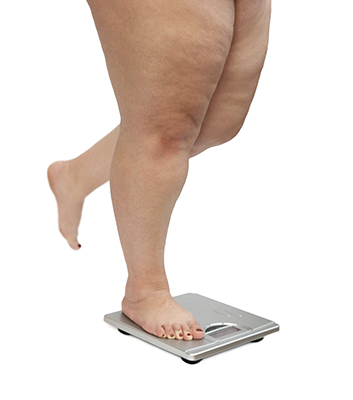 A new 3-D foot scanner by Cyros uses eight pictures to quickly scan a patient’s foot with ease. The creators of the device firmly believe that their device is better than other 3-D scanners made by competitors. The scanner could aid in determining risks for diabetes, obesity, and arthritis. Foot scanners have grown in popularity during recent years, and they are very expensive. They can range anywhere from $10,000-$25,000 per unit. Although a price has yet to be determined for the Cyrus scanner, it is not expected to be near $25,000 like other high end scanners.
A new 3-D foot scanner by Cyros uses eight pictures to quickly scan a patient’s foot with ease. The creators of the device firmly believe that their device is better than other 3-D scanners made by competitors. The scanner could aid in determining risks for diabetes, obesity, and arthritis. Foot scanners have grown in popularity during recent years, and they are very expensive. They can range anywhere from $10,000-$25,000 per unit. Although a price has yet to be determined for the Cyrus scanner, it is not expected to be near $25,000 like other high end scanners.Any additional problems in the feet of those with obesity can be detrimental to foot health. If you have any concerns, Dr. Jordan Rachlin of New York. Our doctor will treat your foot and ankle needs.
Obesity and your Feet
Since your feet are what support your entire weight when standing, any additional weight can result in pain and swelling. Being overweight is one of the main contributors to foot complications.
Problems & Complications
Extra Weight – Even putting on just a few extra pounds could create serious complications for your feet. As your weight increases, your balance and body will shift, creating new stresses on your feet. This uneven weight distribution can cause pain, even while doing the simplest tasks, such as walking.
Diabetes – People who are overweight are at serious risk of developing type-2 diabetes, which has a drastic impact on the health of your feet. As you get older, your diabetes might worsen, which could lead to loss of feeling in your feet, sores, and bruises. You could also become more prone to various infections.
Solutions
Footwear – Specially made footwear that supports your joints, arches, and ankles, and allows room for good circulation is a great option to mitigate pressure and pain. A podiatrist will help you decide what works best for your specific needs.
Exercise – Exercise will help alleviate the pain and give your feet the strength it needs to support your body. Exercise also increases blood flow to your feet, allowing them to remain healthy and strong.
Most importantly, seek the help of a podiatrist for foot care if something is wrong or doesn’t seem to be working. A podiatrist will help you with any questions or information needed.
If you have any questions please feel free to contact our office located in Monroe, NY. We offer the newest diagnostic and treatment technologies for all your foot and ankle needs.
Read more about obesity and the feet.
How to Prevent and Treat Corns
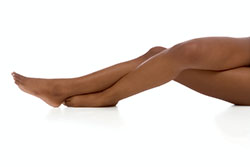 Preventative measures need to be taken in order to maintain healthy and attractive feet. Corns are thickened parts of skin that form near the toes, and they are caused by increased amounts of friction and pressure on the foot. Corns differ from calluses which tend to occur on the bottom of feet. The best way to prevent corns is to make sure you are wearing appropriate footwear.
Preventative measures need to be taken in order to maintain healthy and attractive feet. Corns are thickened parts of skin that form near the toes, and they are caused by increased amounts of friction and pressure on the foot. Corns differ from calluses which tend to occur on the bottom of feet. The best way to prevent corns is to make sure you are wearing appropriate footwear.If you have any concerns about your feet and ankles contact Dr. Jordan Rachlin of New York. Our doctor can provide the care you need to keep your pain free and on your feet.
Corns: What are they? And how do you get rid of them?
Corns can be described as areas of the skin that have thickened to the point of becoming painful or irritating. They are often layers and layers of the skin that have become dry and rough, and are normally smaller than calluses.
Ways to Prevent Corns
There are many ways to get rid of painful corns such as wearing:
- Well-fitting socks
- Comfortable shoes that are not tight around your foot
- Shoes that offer support
Treating Corns
Treatment of corns involves removing the dead skin that has built up in the specific area of the foot. Salicylic acid can help in getting rid of these corns because it dissolves keratin, which is the protein that makes up a good majority of corns. Podiatrists recommend that people with diabetes not use salicylic acid but should consult with their podiatrist regarding the treatment of corns.
If you have any questions please feel free to contact our office located in Monroe, NY. We offer the newest diagnostic and treatment technologies for all your foot and ankle needs
Read more about Corns on the Feet
Why You Need to Stretch Your Feet
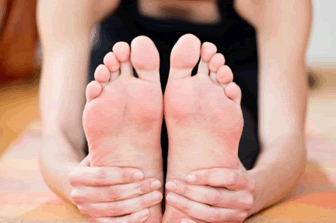 Foot injuries are very common, and athletes tend to ignore them while planning out their stretching routines. There are ways to exercise and stretch the feet and prevent them from becoming injured. One method is to “fan your toes.” The first step is to stand with your feet hip-distance apart. You then want to lift your toes off the floor and hold them for a few seconds before laying them down again. Another method is the “toe wave.” In order to do this, you have to lift your toes, and then lower them. Next, you have to keep your big toes grounded while raising the rest of your toes. Afterward, lift all your toes off the floor, one by one. The last method is simply done by picking up marbles off the floor. Exercising your feet on a daily basis can help prevent unwanted foot injuries during athletic performance. Stretching the feet is recommended especially if you have foot conditions such as plantar fasciitis or pain in the heels.
Foot injuries are very common, and athletes tend to ignore them while planning out their stretching routines. There are ways to exercise and stretch the feet and prevent them from becoming injured. One method is to “fan your toes.” The first step is to stand with your feet hip-distance apart. You then want to lift your toes off the floor and hold them for a few seconds before laying them down again. Another method is the “toe wave.” In order to do this, you have to lift your toes, and then lower them. Next, you have to keep your big toes grounded while raising the rest of your toes. Afterward, lift all your toes off the floor, one by one. The last method is simply done by picking up marbles off the floor. Exercising your feet on a daily basis can help prevent unwanted foot injuries during athletic performance. Stretching the feet is recommended especially if you have foot conditions such as plantar fasciitis or pain in the heels.
Stretching the feet is a great way to prevent injuries. If you have any concerns with your feet consult with Dr. Jordan Rachlin of New York. Our doctor will assess your condition and provide you with quality foot and ankle treatment.
Stretching Your Feet
Being the backbone of the body, the feet carry your entire weight and can easily become overexerted, causing cramps and pain. As with any body part, stretching your feet can serve many benefits. From increasing flexibility to even providing some pain relief, be sure to give your feet a stretch from time to time. This is especially important for athletes or anyone performing aerobic exercises, but anyone experiencing foot pain or is on their feet constantly should also engage in this practice.
Good ways to stretch your feet are:
● Crossing one leg over the others and carefully pull your toes back. Do 10-20 repetitions and repeat the process for each foot
● Face a wall with your arms out and hands flat against the wall. Step back with one foot and keep it flat on the floor while moving the other leg forward. Lean towards the wall until you feel a stretch. Hold for 30 seconds and perform 10 repetitions for each foot
● Be sure not to overextend or push your limbs too hard or you could risk pulling or straining your muscle
Individuals who tend to their feet by regular stretching every day should be able to minimize foot pain and prevent new problems from arising.
If you have any questions, please feel free to contact our offices located in Monroe, NY. We offer the newest diagnostic and treatment technologies for all your foot care needs.
High Heels cause of Numerous Injuries
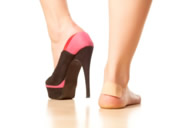 According to a recent study published in the Journal of Foot and Ankle Injuries, high heels incorporated “123,355” injuries which had to be “treated in hospital emergency departments from 2002 to 2012.” The study also suggests that those who are in their 20s “were the most likely to experience an injury, followed by those aged 30 to 39 years.” A majority of the injuries experienced were in the ankle and foot area. Research suggests that high heels pose serious risks, especially to those who wear them daily. High heels impair our ankles, step movement, and overall balance.
According to a recent study published in the Journal of Foot and Ankle Injuries, high heels incorporated “123,355” injuries which had to be “treated in hospital emergency departments from 2002 to 2012.” The study also suggests that those who are in their 20s “were the most likely to experience an injury, followed by those aged 30 to 39 years.” A majority of the injuries experienced were in the ankle and foot area. Research suggests that high heels pose serious risks, especially to those who wear them daily. High heels impair our ankles, step movement, and overall balance.
High heels have a history for causing foot and ankle problems. If you have any concerns about your feet contact Dr. Jordan Rachlin of New York. Our doctor can provide the care you need to keep your pain free and on your feet.
Effects of High Heels on the Feet
High heels are popular shoes among women because their style and societal appeal. Despite this, they can still cause many health problems if worn too frequently.
What parts my body will be affected by high heels?
· Ankle Joints
· Achilles Tendon – may shorten and stiffen with prolonged wear
· Balls of the Feet
· Knees – heels cause the knees to bend constantly, creating stress on them
· Back – they decrease the spine’s ability to absorb shock, which may lead to back pain. Also, the vertebrae of the lower back may compress.
What kinds of foot problems can develop from wearing high heels?
· Corns
· Calluses
· Hammertoe
· Bunions
· Morton’s Neuroma
· Plantar Fasciitis
How can I still wear high heels and maintain foot health?
If you want to wear high heeled shoes, make sure that you are not wearing them every day, as this will help prevent long term physical problems. Try wearing thicker heels as opposed to stilettos to distribute weight more evenly across the feet. Always make sure you are wearing the proper shoes for the right occasion, such as sneakers for exercising. If you walk to work, try carrying your heels with you and changing into them once you arrive at work. Adding inserts to your heels can help cushion your feet and absorb shock. Full foot inserts or metatarsal pads are available.
If you have any questions please feel free to contact our office located in Monroe, NY. We offer the newest diagnostic tools and technologies to treat your foot and ankle needs.
Breanna Mitchell Returns to Field after Recovering from Broken Foot Incident
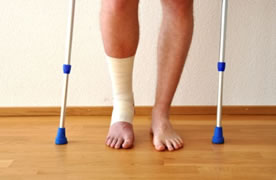 Dominion’s Breanna Mitchell had her career cut short temporarily when she “heard a frightening crack in her foot while playing on the club circuit” last November. She would soon be sidelined for up to 5 months after suffering her broken foot incident. Mitchell was able to return to the field in April, and she currently has committed to playing for Phoenix.
Dominion’s Breanna Mitchell had her career cut short temporarily when she “heard a frightening crack in her foot while playing on the club circuit” last November. She would soon be sidelined for up to 5 months after suffering her broken foot incident. Mitchell was able to return to the field in April, and she currently has committed to playing for Phoenix.
A broken foot requires immediate medical attention and treatment. To learn more, see Dr. Jordan Rachlin of New York. Our doctor will treat your growing feet in addition to other podiatric-related needs.
Broken Foot Causes, Symptoms, and Treatment
A broken foot is caused by one of the bones in the foot typically breaking when bended, crushed, or stretched beyond its natural capabilities. Usually the location of the fracture indicates how the break occurred, whether it was through an object, fall, or any other type of injury.
Common Symptoms of Broken Feet:
Bruising
Pain
Redness
Swelling
Blue (foot)
Numbness
Cold
Misshapen
Cuts
Deformities
Those that suspect they have a broken foot shoot seek urgent medical attention where a medical professional could diagnose the severity.
Treatment for broken bones varies depending on the cause, severity and location. Some will require the use of splints, casts or crutches while others could even involve surgery to repair the broken bones. Personal care includes the use of ice and keeping the foot stabilized and elevated.
If you have any questions please feel free to contact our office located in Monroe, NY. We offer the newest diagnostic tools and technologies to treat your foot and ankle needs.
Two Different Procedures for Creating Orthotics
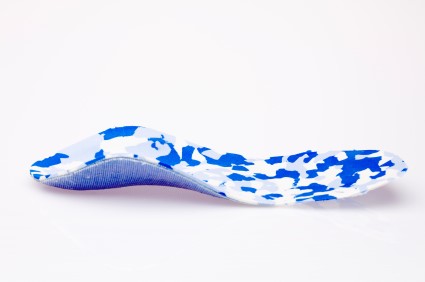 Custom orthotics are prescribed by podiatrists and other foot doctors to treat a multitude of problems and conditions associated with the feet. Orthotics treat pain and offer support for the feet. The two different major procedures for creating orthotics include weight-bearing and non-weight bearing. Weight-bearing involves capturing images of the patient’s feet through a foot scanner, while non-weight bearing involves using a plaster cast to imprint the feet’s structure.
Custom orthotics are prescribed by podiatrists and other foot doctors to treat a multitude of problems and conditions associated with the feet. Orthotics treat pain and offer support for the feet. The two different major procedures for creating orthotics include weight-bearing and non-weight bearing. Weight-bearing involves capturing images of the patient’s feet through a foot scanner, while non-weight bearing involves using a plaster cast to imprint the feet’s structure.
If you are seeking treatment, see Dr. Jordan Rachlin of New York. Our doctor will treat your growing feet in addition to other podiatric-related needs.
What are Orthotics?
Orthotics are inserts, prescribed or over the counter, that you can place into your shoes to help with a variety of foot problems such as flat feet or foot pain. Orthotics provide relief and comfort for minor foot and heel pain, but are unable to correct serious biomechanical problems in your feet.
Over-the-Counter Inserts
Orthotics come in a wide variety of over-the-counter inserts that are used to treat foot pain, heel pain, and minor problems. For example, arch supports can be inserted into your shoes to help correct over arched or flat feet, while gel insoles are often used because they provide comfort and relief from foot and heel pain by alleviating pressure.
Prescription Orthotics
If over-the-counter inserts don’t work for you, or if you have a more severe foot issue, it is possible to have your podiatrist prescribe custom orthotics. These high quality inserts are designed to treat problems such as abnormal motion, plantar fasciitis, and more severe heel pain. They can even be used to help patients suffering from diabetes by treating foot ulcers and painful calluses, and are usually molded to your feet individually, which allows them to provide full support and comfort.
If you are experiencing minor to severe foot or heel pain, it’s recommended to speak with your podiatrist on the possibilities of using orthotics. A podiatrist can determine which type of orthotic is right for you and allow you to take the first steps towards being pain free.
If you have any questions please feel free to contact our office located in Monroe, NY. We offer the newest diagnostic tools and technologies to treat your foot and ankle needs.
Plantar Fasciitis Becomes More Common Among Older Adults
 Plantar fasciitis occurs when the plantar fasciia, the band that lines the soles of our feet, becomes swollen and irritated, leading to pain and inflammation. Plantar fasciitis becomes more common as we age and “is responsible for about 2 million medical visits per year.” Risk factors that can lead to the development or progression of plantar fasciitis include extensive physical activity, standing for long periods of time, obesity, and physical injury. Treating your plantar fasciitis involves visiting your foot and ankle specialist, physical therapy, and proper management of your feet.
Plantar fasciitis occurs when the plantar fasciia, the band that lines the soles of our feet, becomes swollen and irritated, leading to pain and inflammation. Plantar fasciitis becomes more common as we age and “is responsible for about 2 million medical visits per year.” Risk factors that can lead to the development or progression of plantar fasciitis include extensive physical activity, standing for long periods of time, obesity, and physical injury. Treating your plantar fasciitis involves visiting your foot and ankle specialist, physical therapy, and proper management of your feet.
Plantar fasciitis can be very painful and inconvenient. If you are experiencing heel pain or symptoms of plantar fasciitis, see Dr. Jordan Rachlinof New York. Our doctor will treat your growing feet in addition to other podiatric-related needs.
What is Plantar Fasciitis?
Plantar fasciitis is the inflammation of the thick band of tissue that runs along the bottom of your foot, known as the plantar fascia, and causes mild to severe heel pain.
What Causes Plantar Fasciitis?
· Excessive running
· Non-supportive shoes
· Overpronation
· Repeated stretching and tearing of the plantar fascia
How Can It Be Treated?
· Conservative measures – anti-inflammatories, ice packs, stretching exercises, physical therapy, orthotic devices
· Shockwave therapy – sound waves are sent to the affected area to facilitate healing and are usually used for chronic cases of plantar fasciitis
· Surgery – usually only used as a last resort when all else fails. The plantar fascia can be surgically detached from the heel
While very treatable, plantar fasciitis is definitely not something that should be ignored. Especially in severe cases, speaking to your doctor right away is highly recommended to avoid complications and severe heel pain. Your podiatrist can work with you to provide the appropriate treatment options tailored to your condition.
If you have any questions please feel free to contact our office located in Monroe, NY. We offer the newest diagnostic tools and technologies to treat your foot and ankle needs.
More...
Diabetes Affects 382 Million People Worldwide
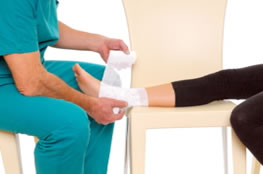 New guidelines about managing diabetic feet have been published in the Journal for Vascular Surgery, emphasizing the importance of taking proper care of feet as a diabetic patient. “Diabetes is one of the leading causes of chronic disease and limb loss worldwide, currently affecting 382 million people.” If diabetic feet are not properly treated, this can lead to risk of neuropathy and foot ulcers. The guidelines suggest preventative care recommendations such as periodic foot inspections, patient and family education, therapeutic footwear, and controlling blood levels.
New guidelines about managing diabetic feet have been published in the Journal for Vascular Surgery, emphasizing the importance of taking proper care of feet as a diabetic patient. “Diabetes is one of the leading causes of chronic disease and limb loss worldwide, currently affecting 382 million people.” If diabetic feet are not properly treated, this can lead to risk of neuropathy and foot ulcers. The guidelines suggest preventative care recommendations such as periodic foot inspections, patient and family education, therapeutic footwear, and controlling blood levels.
Diabetic foot care is important in preventing foot ailments such as ulcers. If you are suffering from diabetes or have any other concerns about your feet see Dr. Jordan Rachlin of New York. Our doctor will treat your growing feet in addition to other podiatric-related needs.
Diabetic Foot Care
Diabetes affects millions of people every year. Diabetes can damage blood vessels in many parts of the body, including the feet. Because of this, taking care of your feet is essential if you have diabetes, and having a podiatrist help monitor your foot health is highly recommended.
The Importance of Caring for Your Feet
● Routinely inspect your feet for bruises or sores.
● Wear socks that fit your feet comfortably.
● Wear comfortable shoes that provide adequate support.
Patients with diabetes should have their doctor monitor their blood levels because blood sugar levels play such a huge role in diabetic care. Monitoring these levels on a regular basis is highly advised.
It is always best to inform your healthcare professional of any concerns you may have regarding your feet, especially for diabetic patients. Early treatment and routine foot examinations are keys to maintaining proper health, especially because severe complications can arise if proper treatment is not applied.
If you have any questions please feel free to contact our office located in Monroe, NY. We offer the newest diagnostic tools and technologies to treat your foot and ankle needs.
Kody Walker Suffers Broken Foot Injury during Practice
 Kody Walker, senior running back for the Arkansas Razorbacks, suffered a broken foot injury while practicing in early April, the ninth practice of the spring for the team. The broken foot required surgery, but the surgery was successful and Walker is currently in recovery until June. “If anyone knows how to battle adversity, it’s Kody Walker,” said Arkansas Coach Bielema.
Kody Walker, senior running back for the Arkansas Razorbacks, suffered a broken foot injury while practicing in early April, the ninth practice of the spring for the team. The broken foot required surgery, but the surgery was successful and Walker is currently in recovery until June. “If anyone knows how to battle adversity, it’s Kody Walker,” said Arkansas Coach Bielema.
A broken foot requires immediate medical attention and treatment. To learn more, see Dr. Jordan Rachlinof New York. Our doctor will treat your growing feet in addition to other podiatric-related needs.
Broken Foot Causes, Symptoms, and Treatment
A broken foot is caused by one of the bones in the foot typically breaking when bended, crushed, or stretched beyond its natural capabilities. Usually the location of the fracture indicates how the break occurred, whether it was through an object, fall, or any other type of injury.
Common Symptoms of Broken Feet:
Bruising
Pain
Redness
Swelling
Blue (foot)
Numbness
Cold
Misshapen
Cuts
Deformities
Those that suspect they have a broken foot shoot seek urgent medical attention where a medical professional could diagnose the severity.
Treatment for broken bones varies depending on the cause, severity and location. Some will require the use of splints, casts or crutches while others could even involve surgery to repair the broken bones. Personal care includes the use of ice and keeping the foot stabilized and elevated.
If you have any questions please feel free to contact our office located in Monroe, NY. We offer the newest diagnostic tools and technologies to treat your foot and ankle needs.
Buster Posey Suffered Bruised Right Foot, Condition Unknown
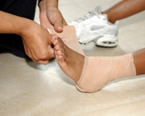 Buster Posey of the New York Giants suffered a bruised right foot, which might lead to Posey potentially missing the entire Rockies season. The foot was causing pain, and “Posey had a hard time running on it Wednesday afternoon,” according to manager Bruce Bochy. However, X-rays came back negative, and Bochy was confident the foot is “going to be fine,” but wanted to let Posey have sufficient recovery time.
Buster Posey of the New York Giants suffered a bruised right foot, which might lead to Posey potentially missing the entire Rockies season. The foot was causing pain, and “Posey had a hard time running on it Wednesday afternoon,” according to manager Bruce Bochy. However, X-rays came back negative, and Bochy was confident the foot is “going to be fine,” but wanted to let Posey have sufficient recovery time.
Sports related foot and ankle injuries need proper treatment before players can go back to their regular routines. If you have any concerns, see Dr. Jordan Rachlinof New York. Our doctor will treat your growing feet in addition to other podiatric-related needs.
Sport Related Foot and Ankle Injuries
Foot and ankle injuries are a common occurrence when it comes to athletes of any sport. While many athletes dismiss the initial aches and pains, the truth is that ignoring potential foot and ankle injuries can lead to serious problems. As athletes continue to place pressure and strain the area further, a mild injury can turn into something as serious as a rupture and may lead to a permanent disability. There are many factors that contribute to sports related foot and ankle injuries, which include failure to warm up properly, not providing support or wearing bad footwear. Common injuries and conditions athletes face, including:
● Plantar Fasciitis
● Plantar Fasciosis
● Achilles Tendinitis
● Achilles Tendon Rupture
● Ankle Sprains
Sports-related injuries are commonly treated using the RICE method. This includes rest, applying ice to the injured area, compression and elevating the ankle. More serious sprains and injuries may require surgery, which could include arthroscopic and reconstructive surgery. Rehabilitation and therapy may also be required in order to get any recovering athlete to become fully functional again. Any unusual aches and pains an athlete sustains must be evaluated by a licensed, reputable medical professional.
If you have any questions please feel free to contact our office located in Monroe, NY. We offer the newest diagnostic tools and technologies to treat your foot and ankle needs.
New Drug Offers PotentialTreatment Solution for Rheumatoid Arthritis Symptoms
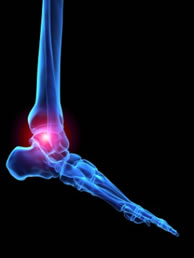 A new drug,baricitinib, was introduced in late March, with its effects intended to treat patients who have rheumatoid arthritis symptoms. The drug was offered as “a potential treatment for people with few options to ease the progressive condition.” According to upi.com, “rheumatoid arthritis affects 1.5 percent of people in developed countries,” and leads to debilitating symptoms such as pain, inflammation, and disability of small joints of the body such as the hands and feet.
A new drug,baricitinib, was introduced in late March, with its effects intended to treat patients who have rheumatoid arthritis symptoms. The drug was offered as “a potential treatment for people with few options to ease the progressive condition.” According to upi.com, “rheumatoid arthritis affects 1.5 percent of people in developed countries,” and leads to debilitating symptoms such as pain, inflammation, and disability of small joints of the body such as the hands and feet.
Because RA affects more than just your joints, including the joints in your feet and ankles, it is important to seek early diagnosis from your podiatrist if you feel like the pain in your feet might be caused by RA. For more information, see Dr. Jordan Rachlinof New York. Our doctor will treat your growing feet in addition to other podiatric-related needs.
What Is Rheumatoid Arthritis?
Rheumatoid Arthritis (RA) is an autoimmune disorder in which the body’s own immune system attacks the membranes surrounding the joints. Inflammation of the lining and eventually the destruction of the joint’s cartilage and bone occur, causing severe pain and immobility.
Rheumatoid Arthritis of the Feet
Although RA usually attacks multiple bones and joints throughout the entire body, almost 90 percent of cases result in pain in the foot or ankle area.
Symptoms
- Swelling & pain in the feet
- Stiffness in the feet
- Pain on the ball or sole of feet
- Joint shift and deformation
Diagnosis
Quick diagnosis of RA in the feet is important so that the podiatrist can treat the area effectively. Your doctor will ask you about your medical history, occupation, and lifestyle to determine the origin of the condition. Rheumatoid Factor tests help to determine if someone is affected by the disease.
If you have any questions please feel free to contact our office located in Monroe, NY. We offer the newest diagnostic tools and technologies to treat your foot and ankle needs.
Location & Hours
1200 Rt 208 Suite 5
Monroe, NY 10950
Directions
Phone: (845) 782-4455
Fax: (800) 968-8601
Monday through Thursday - 8am to 6pm
Friday - 8am - 3pm
Services
Foot and Ankle Pain- Ingrown toenail care
- Sport Medicine
- Medical Grade Orthotics
- Trauma and Sprain Care
- Medical Pedicures
- Plantar Fascitis
- Achilles Tendonitis
- Broken Toe
Copyright © 2015 Monroe Foot Care | Site Map | Design by: Podiatry Content Connection
